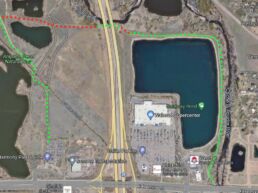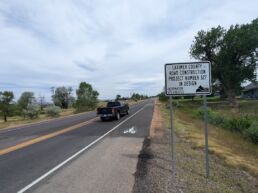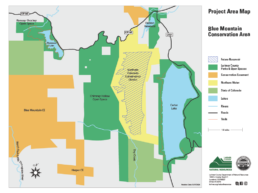After being closed for most of the winter Highway 34, from Loveland to Estes Park, is set to reopen this week. The roughly 20 mile climb has been closed since Oct and will open at 4pm on Thursday May 25th to “all traffic” according to a CDOT announcement. The canyon will again close in early Oct to finish repairing damage sustained during the 2013 floods.
CDOT Unveils Plan to Cut Nearly two Years off US 34 Canyon Construction
Via the CDOT Highway 34 repair info page:
Flood Impact Analysis
US 34 Big Thompson Canyon was heavily damaged during the 2013 floods, with many homes damaged and over 100 air-lifted evacuations. The canyon and its residents also suffered from flooding in 1976. As a result of these two events, CDOT has been studying the hydraulic flow of the river in the canyon, and its impact on the road and bridges along its path. CDOT also is looking for safety improvements and resiliency solutions to prevent and protect against significant damage from future flood events.
Damage Overview
This section US 34 winds its way through the Big Thompson Canyon, providing major access between Loveland, Lyons, and Estes Park. During the flooding, watershed runoff combined with flows released from Lake Estes Dam and surges from debris dam breaches to produce huge flow surges that exceeded the 500–year flood event. The canyon section sustained widespread, massive damage. Major sections of roadway were washed away completely, along with access bridges and retaining walls. In the narrows, much of the roadway and grade were undermined, washing out the pavement from below and exposing the wall support structures.
Emergency (Temporary) Repairs
US 34 – Emergency Repairs Temporary repairs were completed and the highway was reopened to traffic in both directions on Thursday, Nov. 11, 2013. CDOT and its contractors worked from both the east and west ends of the canyon to assess and repair the damage and restore local access as quickly as possible. Emergency repairs were extensive and included removing debris, re-establishing shoulders and embankments, replacing damaged asphalt, filling washed out sections with concrete fill, repairing local access structures, and repairing damaged drainage structures.
Permanent (Long-Term) Repairs
Permanent repairs will include removing and replacing much of the temporary asphalt, embankment fill, and temporary channel protection; as well as re-vegetating, replacing guardrails, and repairing fencing. Some of the roadway sections that were not destroyed, but experienced flood water overtopping the roadway, will be analyzed and possibly replaced.
Estimated Timeline
Est. Design Start: Summer 2014
Construction Start: 2016
Estimated Budget
$280 million
Benefits
One of the goals in the repair process is to introduce certain betterments (improvements that go beyond bringing the roadway up to standard) to roadway facilities that were damaged and make them more resilient to similar storm events in the future. Having analyzed the damage caused during the flood event, certain design elements will be incorporated in an effort to prevent or lessen the severe damage that significant flood events can cause. During the permanent repair phase, several alternatives will be developed to ensure that the Big Thompson channel has increased capacity and the roadway has additional high water relief to handle large storm events.





